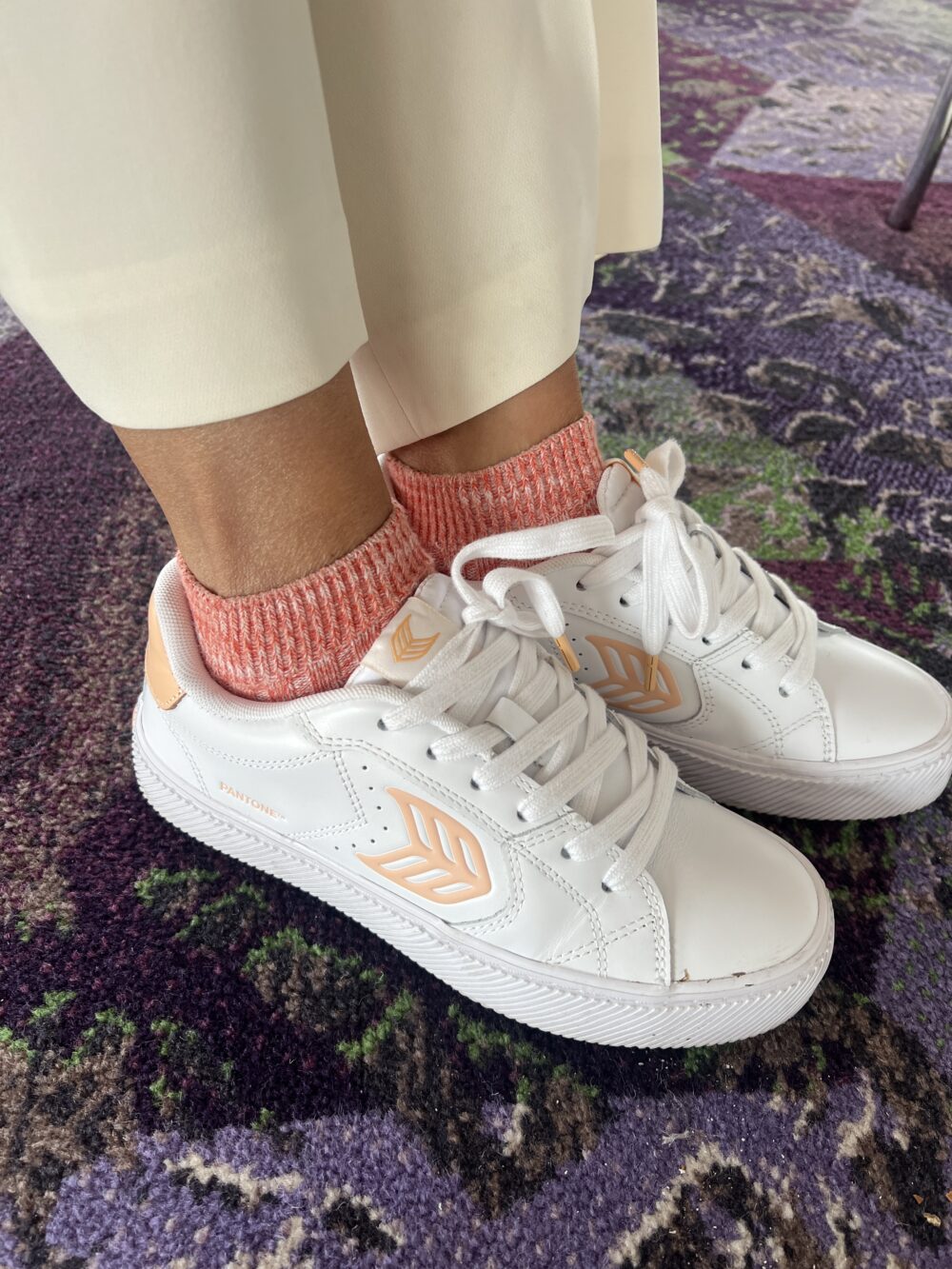Earlier this year at SXSW in Texas, I had the opportunity to sit down with Elley Cheng, President of Pantone. In this exclusive interview, Cheng discussed the profound impact of colour on communication and branding + shared an exciting collaboration with Grammy-nominated Tierra Whack. I also had to ask her, what’s your fav colour?!
Known for its widely used colour-matching system, Pantone sees colour as more than aesthetics, it’s a language that conveys emotions, messages, and brand identities.

Colour and Culture

After noticing that Elley wore Pantone shoes, we discussed evolving colour trends in culture and society. Elley pointed out that colours are constantly evolving, with their meanings shifting over time. For example, the evolution of pink illustrates a dynamic relationship between colour and culture, from gender norms to millennial pink, and the evolving brand of Barbie. “Color doesn’t stay static, just as culture doesn’t stay static,” Elley mentioned how pink has “gone through a vibe shift.” What was once a colour with limited gender connotations, pink now carries diverse and complex cultural significance.
Understanding these cultural shifts is an important consideration for brands as they craft their identities and messages. As Cheng emphasized, “We want to showcase the way colour can express a thought, a brand’s meaning, or what they stand for. It’s the most direct and quickest way to hit the person’s psychology.”
Building a Brand with Passion
Elley highlighted Pantone’s role in facilitating communication through collaborations, such as the recent partnership with Grammy-nominated rapper Tierra Whack for her album release. Working with conceptual artist Alex Da Corte, a curated palette of colours was inspired by Whack’s persona and artistic vision. This collaboration is a testament to how colour can powerfully express a brand or person’s identity.

“Color and culture are very strongly tied because one creates and reinforces the other,” this interaction is evident in how brands use colour to connect to current cultural landscapes while shaping future trends. Pantone’s initiatives, such as the Pantone Color of the Year, reflect this understanding, helping brands align their visual identities with broader cultural movements.
Pantone’s Role in the Creative Industry
The influence of Pantone extends beyond colour matching to encompass a broader impact on the creative industry. Cheng mentioned her SXSW panel with Monotype, Getty Images, and Canva, which focussed on current issues in brand-building and their implications for the future of creativity. The conversation explored how brands can navigate the complex interplay of colour and culture to create meaningful connections with their audiences. Listen to the panel here.
Personal Touch: Favorite Colors and Merchandise
After chatting about colour, collaborations and branding, I couldn’t help but ask Elley a very important question…what’s your favourite colour? In a characteristically Pantone response, she shared her love for deeper shades of red, a colour she finds energizing and attention-grabbing. “There’s this level of energy and excitement in red, and at the same time, it has a deep sophistication.” Her preference highlights the emotional and psychological impact that specific colours can have, both personally and professionally.
Pantone has expanded their palette into consumer products, including books and lifestyle goods, catering to all who love colour beyond professional use. This move signifies Pantone’s recognition of colour’s role in personal expression and style, hinting at future endeavours to bring their iconic colours into everyday fashion.

As a company deeply rooted in the world of colour, Pantone continues to shape artistic expression, brand identity, and cultural trends through its innovative collaborations and products. Elley Cheng’s insights at SXSW show the dynamic relationship between colour and culture, highlighting the importance of agility and authenticity in branding.
Pantone’s projects and partnerships promise to keep the brand ahead of the colourful conversations that influence how we perceive and interact with the world around us.







